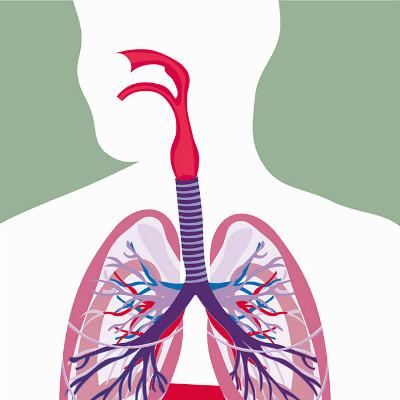What is diaphragmatic hernia
summary
Diaphragmatic hernia generally has two types: traumatic and non innovative. It may be caused by obesity, because the symptoms are not obvious, which makes the diagnosis more difficult. Let's see what diaphragmatic hernia is.
What is diaphragmatic hernia
First of all, diaphragmatic hernia can be divided into traumatic diaphragmatic hernia and non traumatic diaphragmatic hernia, and the latter can be divided into congenital and acquired diaphragmatic hernia. The most common non traumatic diaphragmatic hernia were esophageal hiatus hernia, thoracoabdominal hiatus hernia, parasternal hernia and diaphragmatic absence. Hiatal hernia is the most common in diaphragmatic hernia, with more than 90% of the cases. The etiology of hiatal hernia is still controversial. A small number of young patients have congenital developmental disorders. However, in recent years, it is generally believed that acquired factors are the main ones, which are related to obesity and chronic intra-abdominal pressure rise.

Secondly: because the disease is relatively rare, and there is no specific symptoms and signs, the diagnosis is more difficult. We should pay attention to the suspicious patients with gastroesophageal reflux symptoms, older age, obesity, and obvious correlation between symptoms and body position. In addition to clinical symptoms and physical examination, the diagnosis of hiatal hernia often needs some auxiliary examinations. Routine examination means are gastroscopy and X-ray upper gastrointestinal barium meal, these two examinations are necessary, X-ray examination is still the main method of diagnosis of esophageal hiatal hernia. In order to ensure the accuracy of the examination, it is best to go to a regular hospital for examination.

Finally: asymptomatic or very mild hiatal hernia usually does not require treatment. Because the symptoms of hiatal hernia are mainly caused by the stimulation of esophagus by gastric acid reflux, the medical treatment is basically similar to reflux esophagitis. The principle of medical treatment is to eliminate the factors of hernia formation, control gastroesophageal reflux, promote esophageal emptying and relieve or reduce the secretion of gastric acid.

matters needing attention
The symptom of diaphragmatic hernia is not very obvious, which has a great influence on the normal diagnosis. However, obesity is an important factor leading to diaphragmatic hernia, which can be prevented to avoid the occurrence of diaphragmatic hernia.













